
In 2007, a dark chapter in the world of animal cruelty came to light when authorities rescued 51 Pit Bulls from the Virginia home of Atlanta Falcons quarterback Michael Vick. These innocent animals had endured unimaginable abuse, subjected to beatings, electrocutions, hangings, drownings, and forced dogfights.
Out of this horrific ordeal, 48 resilient Pit Bulls emerged as survivors, thanks to the dedication of several rescue organizations and their forever families. One of these survivors, Frodo, recently passed away at the age of 15 on December 18th, 2021. Frodo’s journey serves as a testament to resilience, second chances, and the unwavering commitment of those who fight for justice and rehabilitation.

Frodo’s life was a stark contrast to the year he spent in hell at Michael Vick’s compound. Once rescued, he was embraced by a loving family and pampered like a prince for the next 14 years. His passing left a void in the hearts of those who knew and cared for him, particularly BAD RAP, an Oakland-based nonprofit animal protection group that played a pivotal role in advocating for and rehabilitating the Vick dogs.

In a touching Facebook post, BAD RAP bid farewell to Frodo: “To Frodo – We all adored him. He was one of the most valiant survivors we’d ever met.” His passing was peaceful, surrounded by the love of his family, who ensured his final moments were filled with comfort and care.

Frodo’s journey wasn’t just a personal triumph; it became a symbol of hope and resilience for Pit Bulls and dogs with difficult pasts everywhere. BAD RAP, with its extensive experience in working with dogs rescued from dogfighting rings, always believed in the potential for these dogs to be rehabilitated and reintegrated into loving homes.
Frodo’s story dispelled the negative stereotypes associated with Pit Bulls and underscored the transformative power of patience and kindness in a dog’s life. He exemplified the importance of early socialization for dogs rescued from cruelty incidents, showing that with the right environment and loving care, even the most timid and scarred animals can thrive.

Kim Ramirez, Frodo’s adoptive mother, shared insights into his journey, explaining how mechanical sounds and sudden movements used to terrify him. She described the challenges of helping Frodo overcome his past trauma, such as his fear of ceiling fans and microwave popcorn, which likely reminded him of the traumatic events he had witnessed.

Throughout his life, Frodo enjoyed the devoted care of the Ramirez family, who accommodated his needs, including transporting him in a stroller when his legs began to fail. His story was a testament to the healing power of love and the resilience of animals.

Frodo’s passing is a reminder of the enduring legacy of the 48 survivors of Michael Vick’s dogfighting ring. These brave dogs were given the opportunities they deserved, and despite their challenging backgrounds, they lived happy lives, proving that remarkable transformations are possible with compassion and commitment.
While Michael Vick’s actions were reprehensible, the high-profile case did raise awareness about dogfighting and its devastating consequences. It also shifted public perception of Pit Bulls, showcasing their potential for rehabilitation and adoption. Frodo and his fellow survivors are living proof that even in the darkest of circumstances, there is hope for a brighter future.

As we bid farewell to Frodo, we honor his memory and the countless animals who have found their second chance at life through the dedication of animal rights activists and the kindness of loving families. Frodo’s story will continue to inspire us to fight for justice, compassion, and a world where every animal can thrive.
What White Tongue Is, and What to Do About It
There are many possible causes for white tongue, and in some cases, it comes with an unpleasant odor and mouth dryness. To get rid of it, sometimes you just need to brush your teeth. But what should you do if that doesn’t help?
❗ This article is for informative purposes only and can’t replace the advice of a specialist.
What white tongue is

The white film may cover the entire tongue, part of it, or appear as spots. At the same time, an unpleasant odor and taste in the mouth may appear. It looks as if there are small white hairs on the tongue’s surface. In fact, they are buds covered with organic particles, bacteria, and dead cells.
White plaque on the tongue (which can also be yellow) may appear for different reasons, like due to irritation or because of an infection. It usually disappears after several days. If the situation doesn’t change for several weeks, and it’s painful to eat and talk, it’s best to see a doctor.
It’s important to note that the plaque may not only be white. While a pink tongue is normal, a brown tongue means the person drinks too much coffee or tea. A yellow tongue means there’s something wrong with the liver, and a red tongue is a sign that the person lacks vitamin B.
Why the tongue becomes white
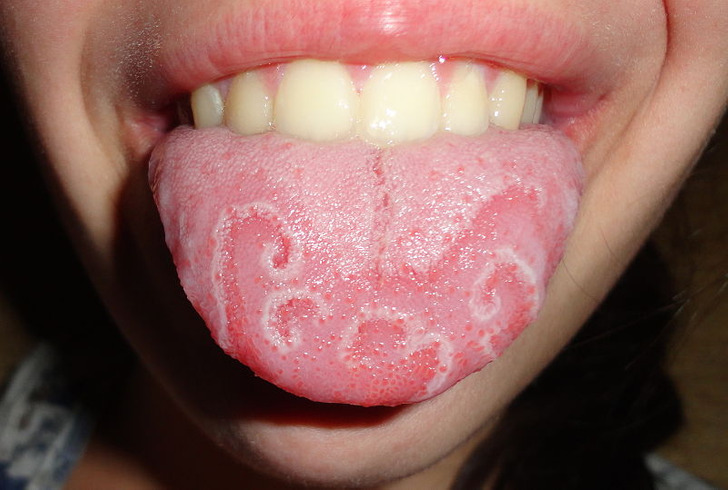
Usually, the tongue becomes white due to bacteria, leftover bits of food, or dead cells that get stuck in between the buds. Because of this, the buds may increase in size or become inflamed. This is how white spots on the tongue’s surface appear.
Sometimes, the plaque appears due to an illness. For example, the geographic tongue is also a condition where white spots appear on the tongue. It’s quite rare, and the causes are unknown, but the condition itself is often connected to eating foods that irritate the tongue. It may also be a reaction to stress, an illness, or hormonal changes.
Why white plaque appears on the tongue
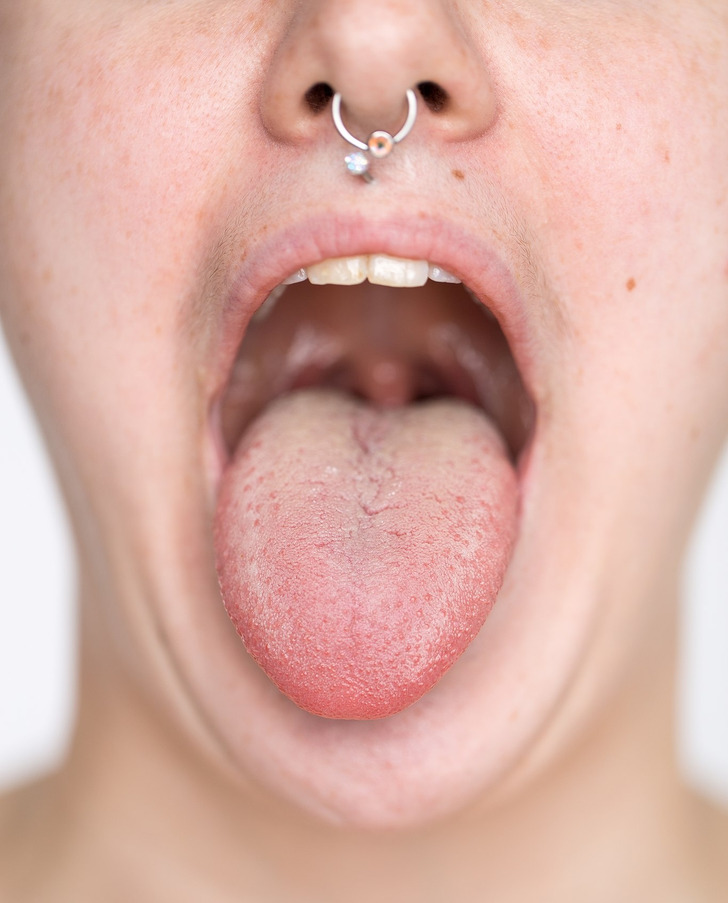
There are some things that make the appearance of white plaque on the tongue more probable:
- Age
- Taking antibiotics (white-yellow plaque appearing when there’s a fungal infection in the mouth)
- A diet that’s lacking enough fruits, vegetables, vitamin B12, and iron
- A weak immune system
- Bad mouth hygiene
- Dental prosthetics or other objects that can damage the tongue
- Dehydration and mouth dryness
What piercings have to do with white tongue
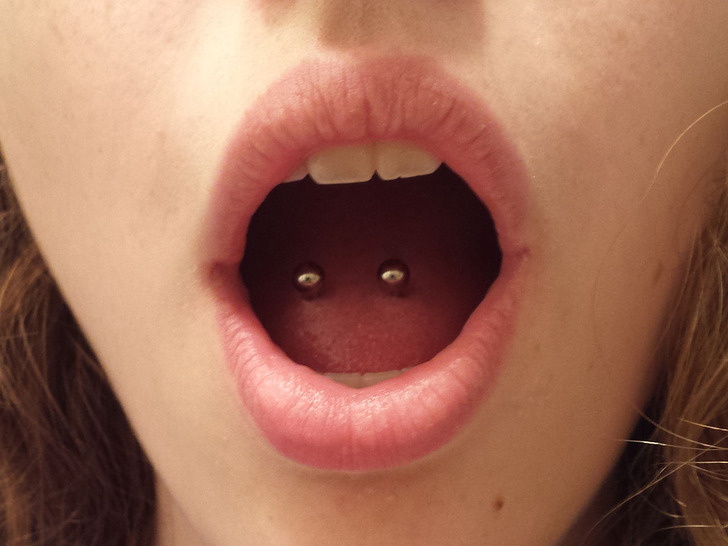
Right after piercing the tongue, there might be some white film present. This happens because the number of bacteria on the tongue increases, and it’s normal. Antibacterial mouthwash will help you get rid of it. Plus, there might be a ring around the piercings, which is normal too, and it means the tissue is healing.
If the plaque appears due to an injury (including piercings), the healing should take around 1.5 weeks. You should avoid irritants, such as hot, spicy, or sour foods and drinks.
How to get rid of white tongue at home
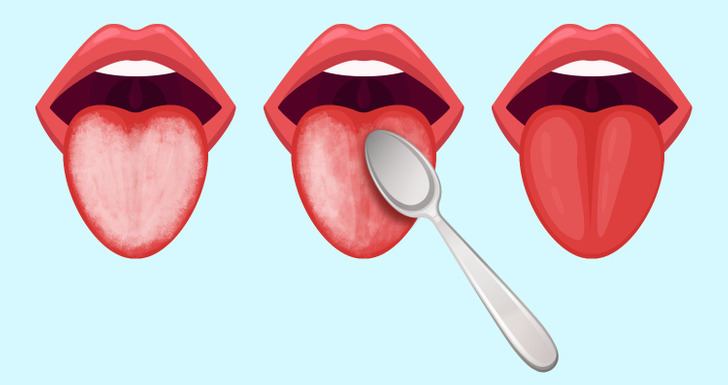
- Practice good mouth hygiene.
- Drink enough water.
- Brush your teeth using a soft toothbrush.
- Use a mild fluoride toothpaste — one that doesn’t contain sodium lauryl sulfate.
- Use fluoride mouthwash.
- Brush your tongue or use a tongue scraper to remove the white coating.
- Drink cold drinks through a straw.
- Avoid food and drinks that are spicy, salty, acidic, or very hot in temperature.
Who to talk to if you’re worried about your white tongue
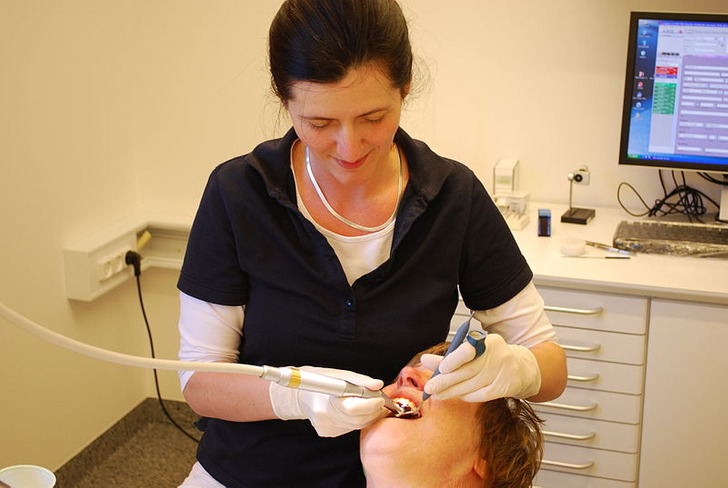
- Your dentist can help you remove the white film from the tongue and prescribe medications if needed.
- Your GP can diagnose the tongue, prescribe you certain medications and determine if the white tongue is an indicator of a more serious issue.
What do you do about white tongue?
Preview photo credit Genusfotografen (genusfotografen.se) & Wikimedia Sverige (wikimedia.se) / Wikimedia Commons, CC BY-SA 4.0, Martanopue / Wikimedia Commons, CC BY-SA 3.0



Leave a Reply